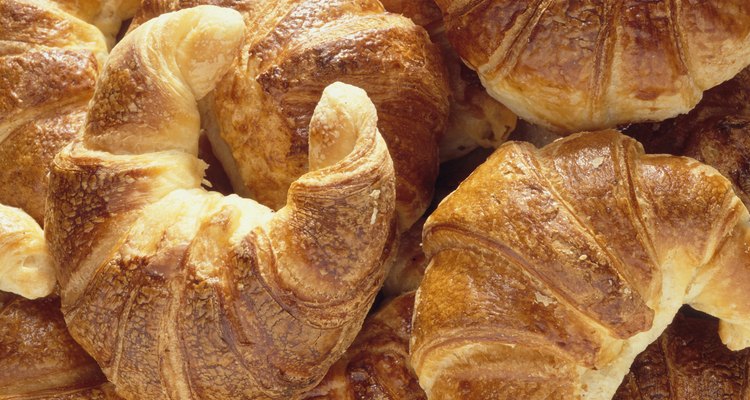
Much of the appeal of home baking comes from the way it fills your kitchen with wonderful aromas. Of course, the rich and sweet flavors are also an attraction. In addition, baked goods have a degree of visual appeal, ranging from the complexity of fancy pastries and decorated cakes to the simple pleasure of a beautifully golden crust. Brushed-on eggs will soften, enrich and color your crust, but if you're coping with allergies -- or are just low on eggs -- you have alternatives.
Egg Washes
Most breads, rolls, pies and pastries can be brushed with eggs before they're baked. Whole eggs soften the crust of bread or rolls and provide a mellow, golden-brown color. Egg whites alone soften the crust and make it shiny, while yolks alone soften it and give it a rich golden color. On pie crusts or pastries, an egg wash accentuates the golden color and can also be used to hold coarse decorating sugar in place. In each case, the eggs should be beaten beforehand with a small amount of water or milk so they'll brush on evenly.
Color
One of the main reasons for using an egg wash is to give your finished baking a rich, golden-brown color. In medieval and Renaissance baking, that golden color was symbolic of good fortune, so "endoring" baked goods to achieve that color was an important step. You can get a good color on bread by brushing the crust with melted butter, light or heavy cream, or evaporated milk before you bake it. On sweet rolls, you can add a small amount of sugar to the milk for additional caramelization and browning. Cream, evaporated milk and sweetened condensed milk are also appropriate on pie crusts or pastries. If you have saffron in your cupboard, infuse a pinch into your milk for an authentic Renaissance touch.
Softening
The enriching and softening effect of eggs is often the reason for brushing them on yeast-raised breads and rolls. It results in a soft, delicate and flavorful crust, highly appropriate for soft, sweet dinner rolls and rich holiday breads. Brushing the rolls or loaves with melted butter or a mild-flavored olive oil also helps soften the crust, and butter adds a rich flavor. Whole milk, cream or half-and-half and evaporated milk will achieve the same result. Don't brush your loaves with water, which has the opposite effect and produces an extra-crisp crust.
Sheen
If your recipe suggests brushing on eggs or egg whites for sheen or glossiness, you have alternatives. Water will give a smooth sheen and a crisp crust to yeast breads. A light sugar syrup will give your breads and Danish pastries a shiny surface and a modest amount of browning, although it can leave the surface slightly sticky. Brushing your yeast-raised doughs with oil or melted butter will help make them shiny, as well as provide a softer crust.
Related Articles
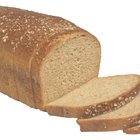
Do You Use Egg Yolks or Whites on Top ...

How to Make a Shine Glaze on Bread
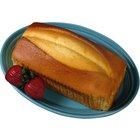
Why Use an Egg Wash Topping Before ...
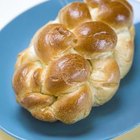
What Can I Use Instead of Eggs to Brush ...
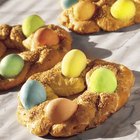
Whole Eggs Vs. Egg Yolks for Sweet Bread
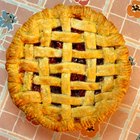
Substitutes for Egg White Brushed on ...

How to Egg Wash a Loaf of Challah Bread
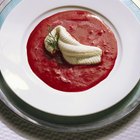
Can You Use Beet Powder for Cupcakes?
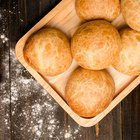
Can You Refrigerate Homemade Yeast ...
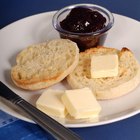
Main Ingredients of English Muffins
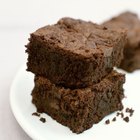
Can I Make Brownies With Confectioner's ...
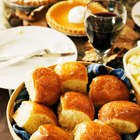
How to Make Bread Tender
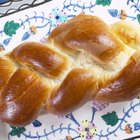
What Does Eggs vs. Oil Do for Bread ...
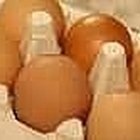
How to Make Your Deviled Eggs Look Great
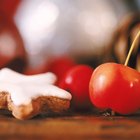
How to Make Shiny Icing for Cookies ...
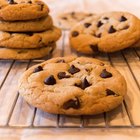
Easy Homemade Chocolate Chip Cookies ...

How to Make Caramel Coloring
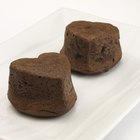
What Is a Souffle Dish?

How to Decorate Sugar Cookies With ...
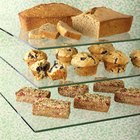
I Forgot to Put the Egg in the Banana ...
References
- The Professional Pastry Chef; Bo Friberg
- On Food and Cooking: The Science and Lore of the Kitchen; Harold McGee
- The Fresh Loaf: Lesson -- Glazing
Writer Bio
Fred Decker is a trained chef and certified food-safety trainer. Decker wrote for the Saint John, New Brunswick Telegraph-Journal, and has been published in Canada's Hospitality and Foodservice magazine. He's held positions selling computers, insurance and mutual funds, and was educated at Memorial University of Newfoundland and the Northern Alberta Institute of Technology.
Photo Credits
Goodshoot/Goodshoot/Getty Images